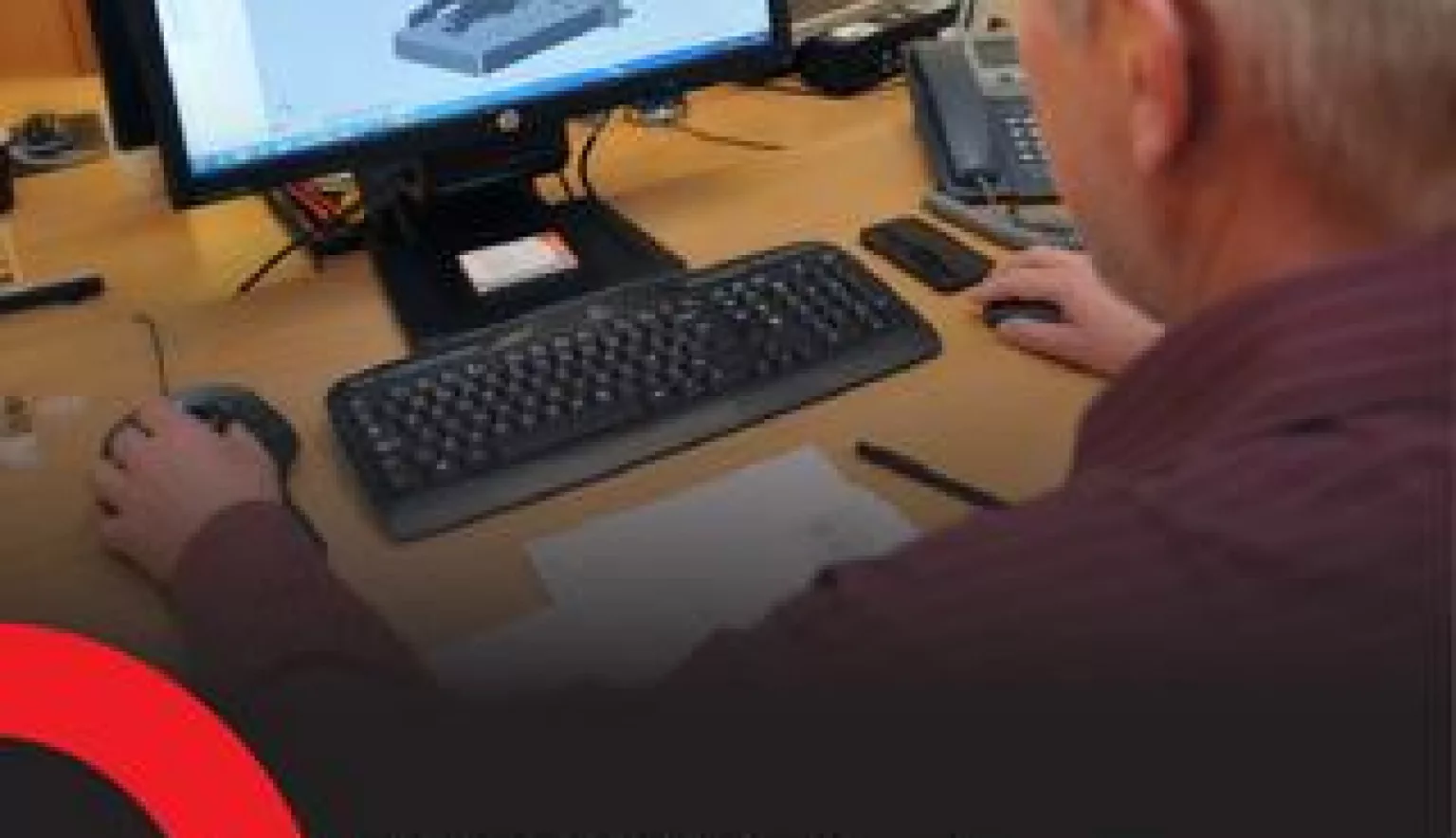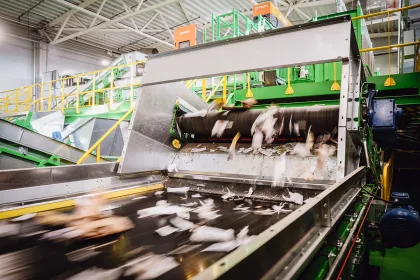The latest Dynamic Ventilation System and Marine Emission Sensor by Danfoss IXA both contribute towards cost efficiency and energy saving in the maritime industry.
SENSING A GAP IN THE MARKET
Danfoss IXA has enhanced its product range and business networks to become one of the most innovative and forward-thinking players in the international maritime sector.
As a daughter company of Danfoss Group, which still maintains 60 percent ownership, Danfoss IXA has been able to capitalise on the extensive business networks enjoyed by the parent Group, who already has a reputable number of products on the market and an established customer base.
One such product stemming from the Group’s hard work in 2005 was a heating solution to innovate and measure air quality; a brainchild which developed even more prominently in 2008 under its Danfoss Ventures subsidiary.
“We started with the purpose of measuring the air quality inside office buildings and we formed the principals of what would become Danfoss IXA A/S,” explains Danfoss IXA’s Sales and Marketing Director, Peter Hansen. “This progressed into a fully-fledged company by the following year on 1st April 2009.”
Five years on and the fully-fledged company has taken the Dynamic Ventilation System concept to new levels, and has complimented this product with a state-of-the-art emissions sensor; ensuring that the company is not only on the radar of the top five global shipping operators, but is also bringing innovative environmental and cost-effective solutions to the maritime industry and beyond.
DYNAMIC VENTILATION SYSTEM
The inventive air quality innovation, the Dynamic Ventilation System, is enriched by its versatility towards other practices – not only in an office environment, as Hansen explains: “We began to think about the application of air quality and ventilation solutions in say, creating the correct temperature for chicken coops for efficient growth, but also monitoring CO2 levels in greenhouses.
“After developing a sensor, we took this concept to great heights and approached larger scale businesses,” he adds.
This concept then caught the eye of one of the largest cargo-movers in the world, Maersk, who initially required a CO2 emissions sensor for its cargo holds in 2009.
“Then we thought – why don’t we use this measurement to control the ventilation too? From this evolved our first Dynamic Ventilation system design for a cargo hold’s ventilation levels, saving shipping operators like Maersk money and energy,” notes Hansen.
After 18 months of complex testing of cargo ventilation systems a major Dynamic Ventilation System project has now been agreed, which will see more than 30 ships retrofitted with the system.
With the proven help of IXA, an 8,000 TEU ship is able to cut its combined kilowatt energy usage to reefer containers below deck and the cargo hold ventilation by up to 15 percent. “This is equal to some 130-140 metric tonnes of fuel in savings a year through the installation of Danfoss systems,” Hansen adds.
What’s more is that the system has an impressive payback time of approximately one year, compared to other maritime projects which normally take between two and 10 years.
INNOVATIVE EMISSIONS SENSOR
Danfoss IXA’s second key product is its emissions sensor which came as a result of building on core sensor competencies and identifying a gap in the market. “We discovered there were no emissions sensors developed specifically for the maritime industry. The current ones all originated from land-based solutions,” Hansen says.
Before IXA invented its unique NOx, SOx and ammonia sensor, the maritime industry had no choice but to use equipment for application on land, which has many disadvantages for use at sea. “Our emission sensor is designed as a low maintenance and easy to install solution, placed in-situ (measuring greenhouse gases directly from the exhaust pipe of a ship).”
Via UV-technology, Danfoss IXA’s product once again proved itself as a documented solution to energy efficiency, cost savings and ease of use. “Moreover, by using UV over infrared, our measurements are not affected by humidity/water in the air, whereas other systems have this problem,” Hansen adds.
“The only part that the crew will need to periodically change is the UV bulb box, which minimises the amount of time needed to train the crews on board each ship.”
FAST UPDATE
Hansen identifies the emissions sensor as the main focal point for the future growth of Danfoss IXA as it is able to fulfill three vital roles, the first being engine control: “By having a fast update rate on the emissions sensor and by placing it just outside the engine, an advanced engine control can continually tweak the parameters of the engine via updates every second in order to save fuel.”
As a ship’s engine can have between 50,000-100,000 of horsepower and an exhaust pipe between one and two metres in diameter, controlling emission levels can be a challenging task. However, the fast update system makes this much easier to manage.
The second vital role of the sensor relates to complying with regulations. When the engine is running, it is imperative that ships comply with international air pollution regulations which Hansen further explains: “Part of this procedure can be to implement after-treatment systems and regularly monitor the performance of these systems and whether they are cleaning the exhaust as they should,” Hansen continues.
Finally, these figures need to be efficiently documented and ready for authorities, both internal and external, to access. “For example, documenting every ship’s performance can tell you why two identical ships are performing slightly differently. The sensor information could even be used to pre-warn crews of a potential problem with the engine in advance and you could use the information created by the fast update system to identify the issue.”
In the next twelve months, Danfoss IXA’s NOx, SOx and ammonia emissions sensor will be brought to market, allowing for on-board emissions testing. The marine emission sensor will also be officially launched this year.
CONSERVATIVE INDUSTRY
The maritime industry can be very cautious and conservative in their approach to trying new technologies. “It takes time to change the market and perceptions of these big players,” Hansen explains. “Additionally, there are political processes to consider in terms of emissions. Authorities continually update their regulations which can slow progress.
“You have to be willing to make huge investments in order to test systems on ships, and to get this attention can be difficult.
“However, we have made it through one-and-a-half years of testing and have a proven product ready for market. Even if you have the best ideas and a good product, you need to understand that the whole process of getting accepted takes time.”
FIVE-YEAR PLAN
In line with IXA’s ambitious goal to grow by a third each year comes an equally determined approach to securing and training the right experienced staff. “We are building on each individual and how they see themselves. We are using both the extensive internal training programmes inside the group, but also specialised classes held at universities,” Hansen says.
Most importantly however, he says that nothing compares to seeing the size and scope of an engine with your own eyes: “We can create presentations, images and words, but it is totally different to seeing an engine in the flesh.”
Equipped with a five-year plan and progression from the testing phase and now into installation, Danfoss IXA has targeted a 200 DKK turnover by 2020. “This will allow us to stand on our own feet. What’s more is that we can look at creating different kinds of sensors or measuring a different type of gas. Supported by a versatile product, our platform is sure to grow,” states Hansen.
With a long term commitment to big name customers and fulfilling high expectations, Danfoss IXA is outfitted with an innovative technical team who conduct the right market research to make the right product for the market, at a competitive price. And, as regulations begin to change to match greener policies, the market for this maritime product grows every day.
“The maritime industry should not only be driven by air pollution regulations, but also see the cost-savings in reducing energy consumption. By being proactive, we can enable companies to think like this. A sensor by itself does not save energy, but it paves the way for the possibility to save energy,” concludes Hansen.


































